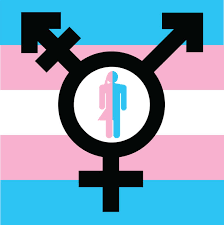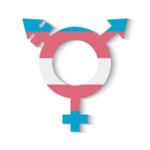In recent years, discussions surrounding gender identity have gained significant momentum, leading to greater awareness and understanding of various identities within the transgender community. Among these identities is FTM, which stands for "female to male." This article delves into the meaning of FTM, the journey individuals often experience, and the terminology associated with transgender identities. By breaking down these concepts, we aim to foster a better understanding of FTM identities and support for those navigating their own gender journeys.
Understanding FTM: What Does It Really Mean?
FTM, or female to male, refers to individuals who were assigned female at birth but identify and live as male. This identity can encompass a range of experiences and expressions, from social transition—such as adopting a new name and pronouns—to medical interventions like hormone therapy or surgeries. For many FTM individuals, their transition is not just a physical change but an important step in aligning their outward appearance with their inner sense of self.Breast Tissue GrowthWhat Does Progestin Do To The Female Body
Recognizing that FTM is just one aspect of the broader transgender spectrum is essential. Not all FTM individuals will pursue the same steps or experiences during their transition; some may choose to undergo surgeries, while others may not. The key takeaway is that FTM is about authentic self-identification, which can manifest in various ways, shaped by personal experiences, cultural backgrounds, and individual preferences.
The Basics of Transgender Identity Explained
Transgender is an umbrella term that covers individuals whose gender identity differs from the sex they were assigned at birth. This includes a wide range of identities, including FTM, MTF (male to female), non-binary, and genderqueer, among others. Understanding this concept challenges traditional binary notions of gender, emphasizing that gender identity is a personal and often fluid experience.
At its core, being transgender is about self-identification. While some individuals may feel comfortable with their assigned gender, others may find that their true sense of self aligns differently. For FTM individuals, this often means embracing a male identity and seeking ways to express that identity in their everyday lives. It’s important to approach transgender identities with an open mind, recognizing the diversity and complexity of each person’s journey.
Key Differences: FTM vs. Other Gender Identities
While FTM specifically refers to those transitioning from female to male, other gender identities like MTF, non-binary, and genderfluid encompass different experiences. MTF individuals, for instance, were assigned male at birth but identify and live as female. Non-binary people may not exclusively identify as either male or female, which adds additional complexity to the discussion around gender identity.
Understanding these differences is crucial for fostering respect and support within the community. Each identity comes with its unique challenges, experiences, and paths of self-recognition. By acknowledging the nuances between FTM and other gender identities, allies can better appreciate the diverse spectrum of gender experiences and provide more tailored support.
The Journey: Common Experiences of FTM Individuals
Every FTM journey is unique, but many individuals share common experiences. The realization of one’s gender identity can often be a long and personal process, sometimes beginning in childhood but becoming clearer in adolescence or adulthood. Many FTM individuals experience feelings of dysphoria, which is the discomfort or distress associated with a mismatch between their assigned gender and their true identity. This can motivate them to explore transition options.
Transitioning can also be both liberating and challenging. While many may find joy in becoming authentic to themselves, they may also face societal stigma, family misunderstandings, or even discrimination. Navigating these hurdles while seeking acceptance and understanding can be a significant part of the FTM experience, underscoring the need for compassion and support from friends, family, and the broader community.
Language Matters: Terms You Should Be Familiar With
When discussing FTM identities, it’s important to familiarize yourself with relevant terminology to communicate effectively and respectfully. Terms like "gender dysphoria," "transition," "cisgender," and "non-binary" are commonly used in conversations about gender identity. Understanding these terms can help create a more inclusive environment for FTM individuals and foster meaningful interactions.
Another vital aspect is understanding the importance of chosen names and pronouns. FTM individuals may adopt a new name that aligns with their male identity and prefer he/him pronouns. Respecting these preferences is crucial, as it validates their identity and helps build a supportive community. The language we use can greatly influence the level of acceptance and understanding within society, making it vital to educate ourselves continually.
The Role of Pronouns in FTM Identity
Pronouns are an essential aspect of FTM identity and are directly tied to how individuals wish to be seen and acknowledged. For many FTM individuals, using male pronouns—like he/him—can be affirming and integral to their sense of self. On the other hand, being misgendered (using incorrect pronouns) can lead to feelings of distress and invalidation.
It’s important to note that some FTM individuals may also identify with different pronouns, including they/them or other gender-neutral options. Understanding and using the correct pronouns not only helps to affirm their identity but also fosters an environment of respect and acceptance. When unsure, it’s perfectly acceptable to ask someone what pronouns they use, as this shows a willingness to learn and support them on their journey.
Importance of Community Support for FTM People
Community support plays a vital role in the lives of FTM individuals. Finding a safe space where they can share their experiences, struggles, and triumphs can significantly impact their mental and emotional well-being. Many FTM individuals thrive in environments that offer understanding, acceptance, and encouragement, whether through local support groups, online forums, or LGBTQ+ organizations.
Additionally, allies play a crucial role in creating supportive communities. Family members, friends, and allies can help by educating themselves about FTM identities and advocating for inclusivity. Being an ally means standing up against discrimination, offering a listening ear, and providing resources when needed, all of which contribute to a more supportive environment for FTM individuals.
Resources for FTM Individuals and Their Allies
There are numerous resources available to support FTM individuals and their allies. Organizations like the Human Rights Campaign (HRC), the Trevor Project, and local LGBTQ+ centers often provide valuable information, support groups, and access to mental health services. These organizations can be instrumental in helping individuals navigate their journeys while connecting them with supportive communities.
For allies, resources such as educational websites, books, and workshops can facilitate understanding and help foster supportive environments. Engaging with these resources can empower allies to advocate effectively for FTM individuals and promote awareness about transgender issues, ensuring that everyone has the opportunity to feel accepted and valued in their identities.
Understanding FTM identities is an essential part of fostering inclusivity and acceptance within our society. By exploring the meaning behind FTM, the experiences of those who identify as such, and the importance of terminology and community support, we can create a more compassionate and informed world. Whether you are an individual navigating your own gender journey or an ally seeking to support someone else, remember that every story is unique and deserving of respect. Together, we can contribute to a more understanding and inclusive society for all gender identities.


